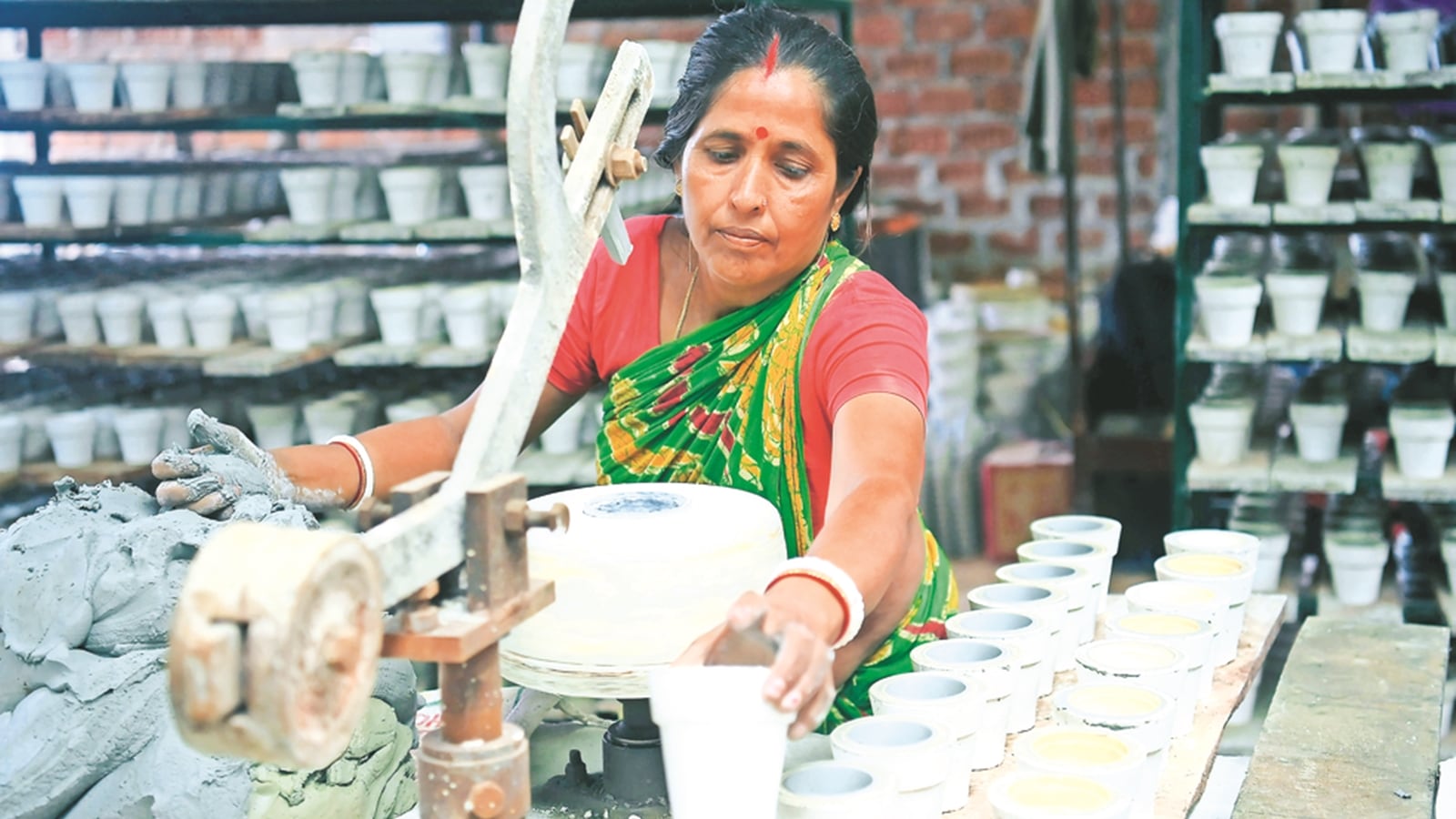According to the Economic Survey 2024-25, women own only 22 per cent of India’s MSMEs. A large number of these enterprises are micro-enterprises – largely single-person units with high concentration in low-margin, informal, and traditional sectors like tailoring, food processing, and handicrafts. Despite constituting nearly half the population, the share of women-led enterprises is abysmally low in India. This isn’t just a gender gap; it’s an economic opportunity gap of massive proportions. India cannot realise the vision of a “Viksit Bharat” without unlocking the huge potential of women entrepreneurs.
There is a lot of optimism in India about tapping the demographic dividend that could propel economic growth and support the transition to a high-income country. This largely refers to harnessing the potential of India’s youth. However, there is another untapped Indian demographic that can potentially lead to a substantial increase in India’s GDP: Women.
Women-led MSMEs (WMSMEs) are not just about women’s empowerment and mainstreaming. They are also about families, communities, and local economies. Studies show that women tend to reinvest up to 90 per cent of their income into their families, in contrast to 30-40 per cent by men. That means better nutrition, education, and health outcomes for children, that is, a stronger society and a more resilient economy.
WMSMEs are more likely to hire other women, helping reduce gender disparities in the labour market and driving innovation in underexplored sectors like bio economy, eco-tourism, arts and crafts, food processing, etc. Many of these WMSMEs operate in rural and underserved areas that address pressing local needs, bridging the urban-rural divide. Thus, unlocking the potential of women-led MSMEs isn’t just about inclusion — it’s a national economic imperative.
The MSME sector is the backbone of the Indian economy, contributing 30 per cent to GDP and employing over 20 crore people. It is also one of the few spaces in the economy where women’s participation is comparatively higher. Yet, women-led enterprises struggle to access formal capital, market linkages, or even basic recognition. Less than 10 per cent of women entrepreneurs use formal credit services, and a majority continue to rely on personal savings or informal channels to keep their businesses afloat. This is despite evidence that women-led businesses have high repayment rates, low default, and enormous potential for job creation.
In rural India, where women already lead collective action through self-help groups (SHGs), the opportunity is even more profound. But financing models, policies, and enterprise support systems have failed to evolve with their ambition. Most women lack collateral, formal business histories, or credit scores — the basic keys to the formal lending world. Financial institutions often view women-led enterprises as riskier, despite evidence to the contrary. Deep-rooted social norms and safety often inhibit their mobility, decision-making power, and public visibility. Women’s economic activity is frequently viewed as supplemental rather than entrepreneurial. While numerous entrepreneurship programmes exist (RSETI, SVEP, PM Vishwakarma, PMEGP), these efforts are often gender blind and operate in silos — focusing narrowly on inputs such as training or one-time funding. They lack not just a gender lens but also a cohesive, end-to-end support architecture that integrates business idea discovery, skills, mentoring, financing, and market access. The social norms and access gaps are much wider in rural areas where most of India’s women reside.
On the brighter side, however, several new programmes and models have emerged in the last decade that don’t just address one part of the problem, but aim to build entire support ecosystems around women entrepreneurs. SHGs and collective enterprise models continue to be a quiet revolution in rural India. Decades of mass collectivisation have resulted in robust women’s groups who are now ready to provide the foundational support to thriving women-led enterprises. These groups alter community norms and perceptions, reduce entry barriers, distribute risk, and offer the comfort of a familiar community. For many women, it’s the only feasible way to start.
Similarly, the NAK (Nari Adhikar Kendra) initiative by MP State Rural Livelihood Mission and Transform Rural India (TRI) has transformed the enterprise support ecosystem for rural women. It offers women a support ecosystem that includes mentorship, enterprise incubation, skilling, and market linkage. Many women who started as SHG members have now registered as Udyam enterprises and are supplying to institutional buyers.
Digital innovation is also rewriting the rulebook. Platforms like the Open Network for Digital Commerce (ONDC) are allowing women to reach customers without the traditional constraints of retail infrastructure. Mann Deshi and Rang De have pioneered women-friendly banking models — tech platforms that don’t just lend, but support women-led enterprises with training, mentoring, and market linkage.
The case is equally strong for CSR investors. India’s ground-breaking CSR legislation has led to corporate contributions crossing Rs 25,000 crore annually. However, most of this capital remains locked in low-risk, compliance-driven projects, concentrated in urban or peri-urban areas. Reports like the India Philanthropy Report 2023 (Bain & Dasra) and Sattva’s State of CSR in India underline a persistent trend: Companies are prioritising CSR spends that are safe, familiar, and easy to report. Women-led enterprises offer high social and economic returns, and CSR can play a catalytic role in de-risking early-stage investments and creating a supportive entrepreneurship ecosystem for women entrepreneurs.
If India is serious about becoming a $5 trillion economy and “Viksit Bharat” by 2047, women-led MSMEs must move from the margins to the mainstream. We already know what to do. The question is: Are we ready to act?
The writer is Associate Director, Transform Rural India

